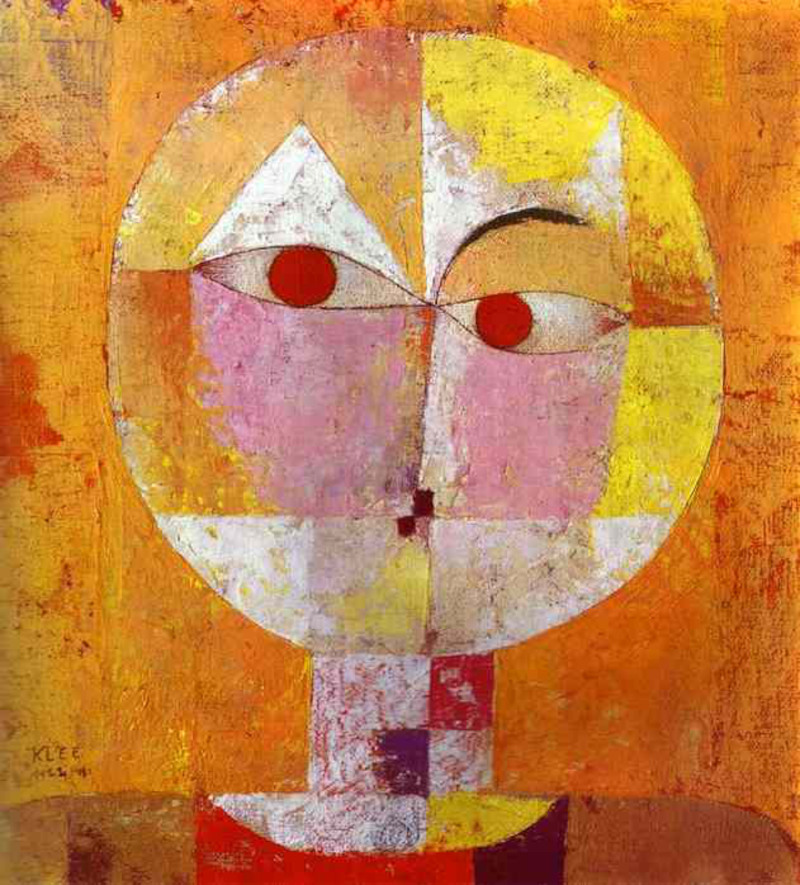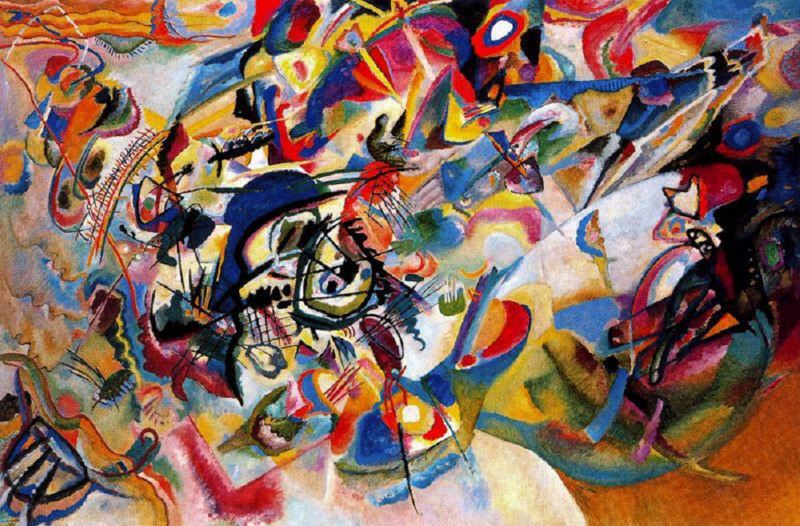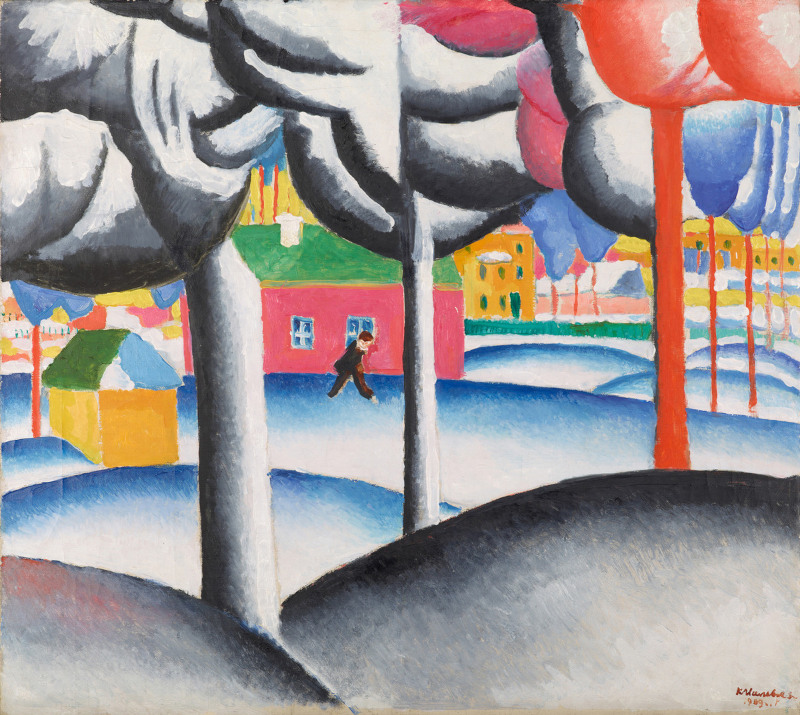Discover the history of abstract art, touching on the most famous abstract artists of the 20th century, with a guide to Abstractionism in Art
Introduction to Abstract Artists and Abstractionism in Art
The early to mid 20th century was an exciting period of growth and development in European art, with abstraction starting to replace the more formal methods of representation. Emotions and concepts could now be displayed through non-literal means, and this push away from reality opened many doors for creatively-minded, innovative artists.
The rise of abstract art brought many new movements into the mainstream, initially in Europe before a later spread into other territories such as the US and Mexico. These new developments also represented an influence from non-western art, as the world started to open up and a wider variety of ideas and techniques would now be shared and promoted.
This article will first examine the most famous abstraction artists from across the century, as well as drilling down into the specific movements in which they were involved. The selection of artists attempts to cover the full gamit of styles and disciplines in which the use of abstract art would spread, going from painting and drawing into sculpture, digital art and much more.
List of Famous Abstract Artists
We have summarised the most famous abstract artists down to a list of 18, who we believe to be the most influential and talented of them all. The list spans the entire 20th century, and provides a comprehensive guide to the different offshoots of abstract art, as well as the regions in which it flourished. The success of the movement ensures that all of the names listed here can be considered household names on a global level.
Abstract art touches on many different movements, and varying levels of abstraction can be used within that. Even within the careers of these artists, many would evolve their work over the course of their careers, and some would initially work in a more classical style skin to Impressionism or even Renaissance art. Over time, as their personality started to show through in their work, and their confidence grew, so they would move towards a more unique approach.
Wassily Kandinsky
Wassily Kandinsky remains one of the most famous abstract artists of them all, and left a huge legacy on European modern art. He was not only a talented painter, but also a theorist, helping to develop a deeper thinking approach to abstraction, including in the study and use of color. Kandinsky was also involved in a number of significant art groups, where progress would be made and momentum built, through the exchange of ideas between like minded artists.
Kandinsky's path to abstraction was slow, but steady. Some of the abstract paintings listed below give an indication of the artist towards the end of his evolution, when forms were reduced to arrangements of circles and lines. Prior to that, his work was expressive but more traditional, including a number of charming landscapes and cityscapes.
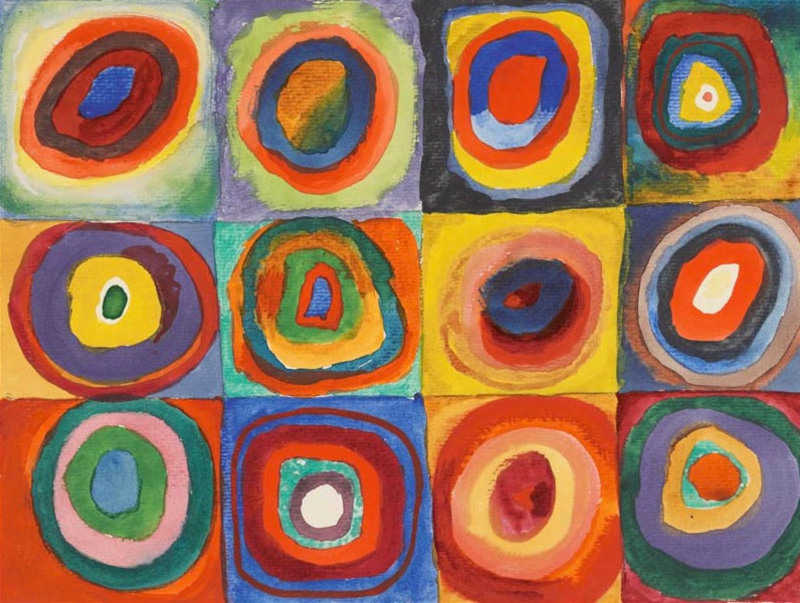 Squares with Concentric Circles, Abstract Expressionism by Wassily Kandinsky
Squares with Concentric Circles, Abstract Expressionism by Wassily Kandinsky
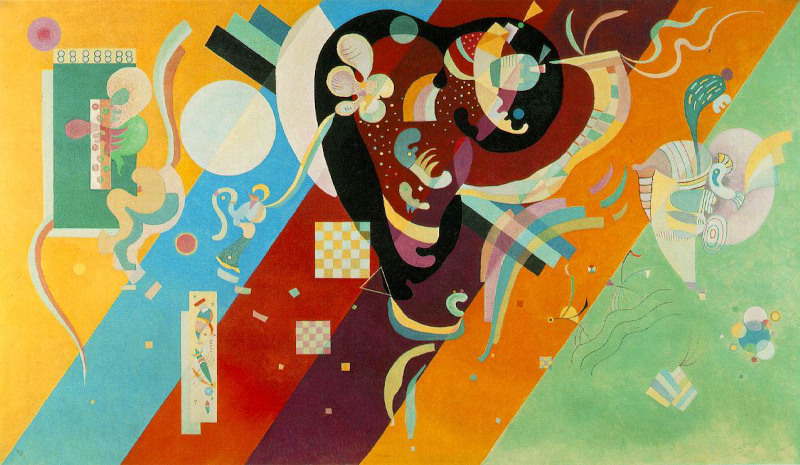 Composition IX by Wassily Kandinsky
Composition IX by Wassily Kandinsky
Hilma af Klint
Hilma af Klint was a talented and influential Swedish female painter whose impact has for many years been undervalued. Only now has knowledge about her achievements started to spread beyond her native Sweden, and she is now seen as a key contributor to abstract art in the early 20th century. Klint was influenced by mysticism and was a deep thinking woman who formed connections with a number of other female painters.
Her work was hidden from view for two decades after her death, at her request, because of its contemporary nature. She delivered simple arrangements of circles and color, which for the period was ground-breaking. Inevitably, it took time to be accepted, but she is now seen as one of the most famous female abstract artists in history and a very important addition to the history of Swedish art.
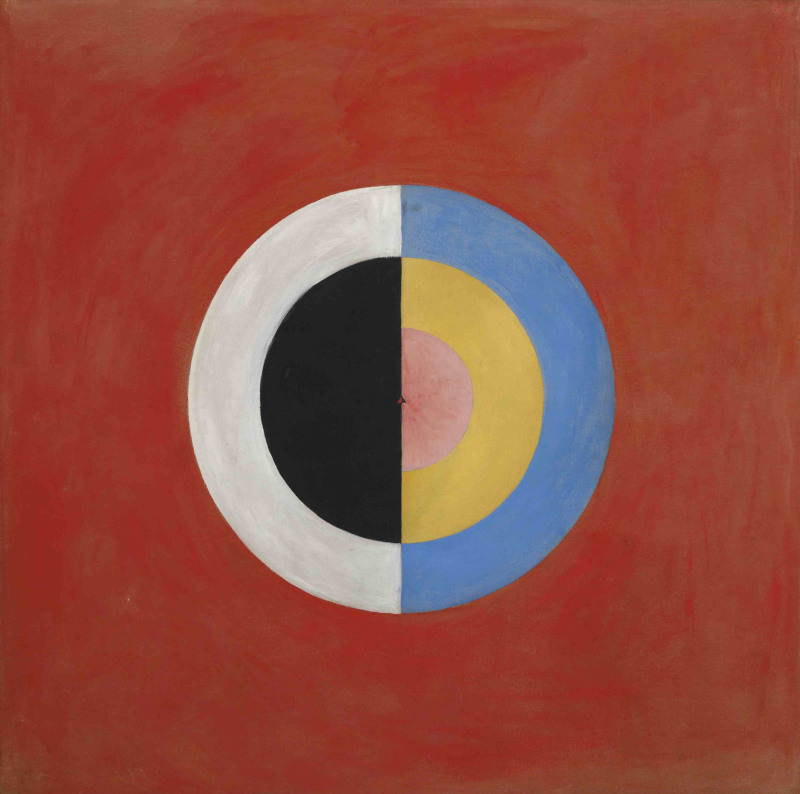 The Swan, Abstract Expressionist Painting by Hilma af Klint
The Swan, Abstract Expressionist Painting by Hilma af Klint
Jackson Pollock
Jackson Pollock was an American Abstract Expressionist who helped New York to become the capital of western art. He impressed using the drip technique which offered a form of artwork that could never be reproduced, even by the same artist. There was the element of chance, as promoted by Surrealist artists, as well as a careful consideration of color. Pollock loved to express himself and the physical nature of his approach helped him to feel highly connected to his art.
The artist would lay large canvases down and apply paint whilst standing above, dripping paint directly. Across his work he would vary colors to give different feelings. This approach could only have worked in the 20th century, when artists were now afforded much more artistic freedom than had been seen before, with the US being at the forefront of that in the second half of the 20th century.
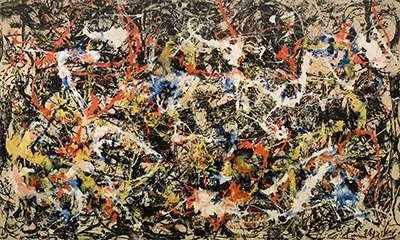 Convergence Drip Painting by Jackson Pollock
Convergence Drip Painting by Jackson Pollock
Piet Mondrian
Piet Mondrian was a Dutch painter who evolved over the period of his career, taking in a variety of movements including Cubism, before later switching to a highly abstract method. He is most famous for the latter day, representing city scenes with simple arrangements of black lines which created panes of color between their intersection points. His earlier works were expressive landscapes, including scenes of his local beaches and tree paintings.
It was the simplicity of Mondrian's late work which was to stick most in people's minds. To deliver such abstraction in the early to mid 20th century was groundbreaking, and paintings such as this still appear entirely contemporary today, nearly one hundred years later. He stuck to a limited palette, using tones of blue, yellow and red to sit alongside his black and white lines, gifting us some impactful work which spearheaded the abstract art movement.
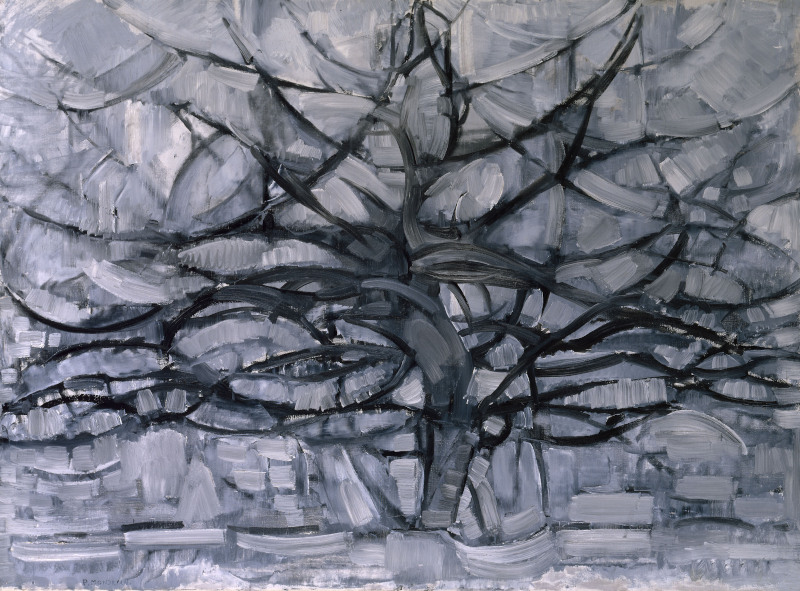 Grey Tree Abstract Landscape by Piet Mondrian
Grey Tree Abstract Landscape by Piet Mondrian
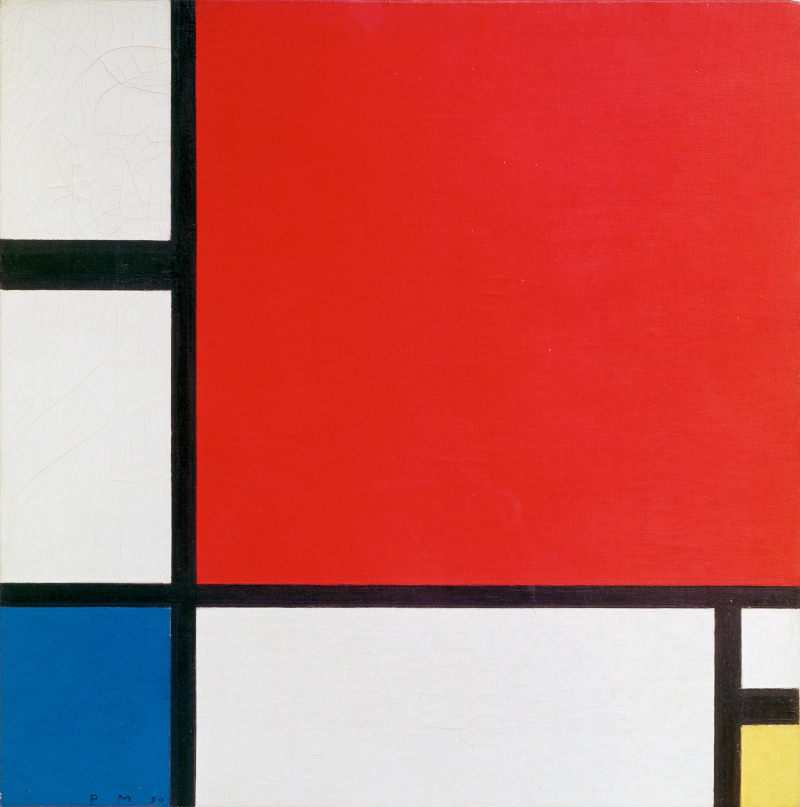 Composition II in Red, Blue, and Yellow by Piet Mondrian
Composition II in Red, Blue, and Yellow by Piet Mondrian
Mark Rothko
Mark Rothko is best known for his artistic style which became known as Color Field painting. He produced large murals, several metres wide and tall, that would cover the viewer's viewport and engulf them in a sea of color and abstraction. He stuck with this approach for several decades, after initially trying out other forms of modern art which had more of an expressive manner. His paintings today are entirely recognisable as his own, despite the influence that he had on later generations of American artists.
Rothko loved to reduce items to abstract forms, and named his paintings in a very generic manner in order to allow the viewer to decide for themselves as to what they were looking at. This lack of detail made color choices even more important, with Rothko tending to go for brighter tones in most cases. He remains one of the leading American Abstract Expressionists from the second half of the 20th century.
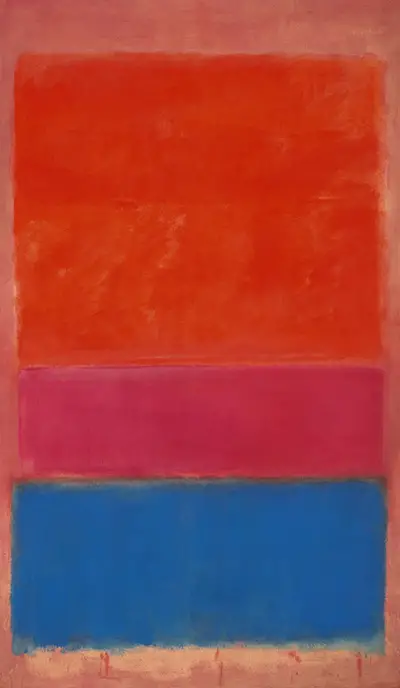 No 1 Royal Red and Blue Abstractionism Art by Mark Rothko
No 1 Royal Red and Blue Abstractionism Art by Mark Rothko
Kazimir Malevich
Kazimir Malevich became famous for taking abstractionism just as far as it could go. He produced simple arrangements of single shapes placed centrally on his canvases, often in black and white. This included his Black Square, which was recently used as a viral political statement, by many who were unaware of the origins of the painting. He was one of the first artists to work in this manner, and soon fell out of favor with ruling powers in his native Russia, forcing him to leave many of his paintings in Germany after being allowed to exhibit there.
After running into issues with this abstract style, Malevich started to depict local peasantry in a manner that was more acceptable to the tastes of the day. These paintings were still highly expressive and managed to strike the right balance between delivering impactful modern art, but without dragging the artist into further controversy. Today he is regarded as one of the leading Eastern European abstract artists, with other great works including White on White and Black Circle.
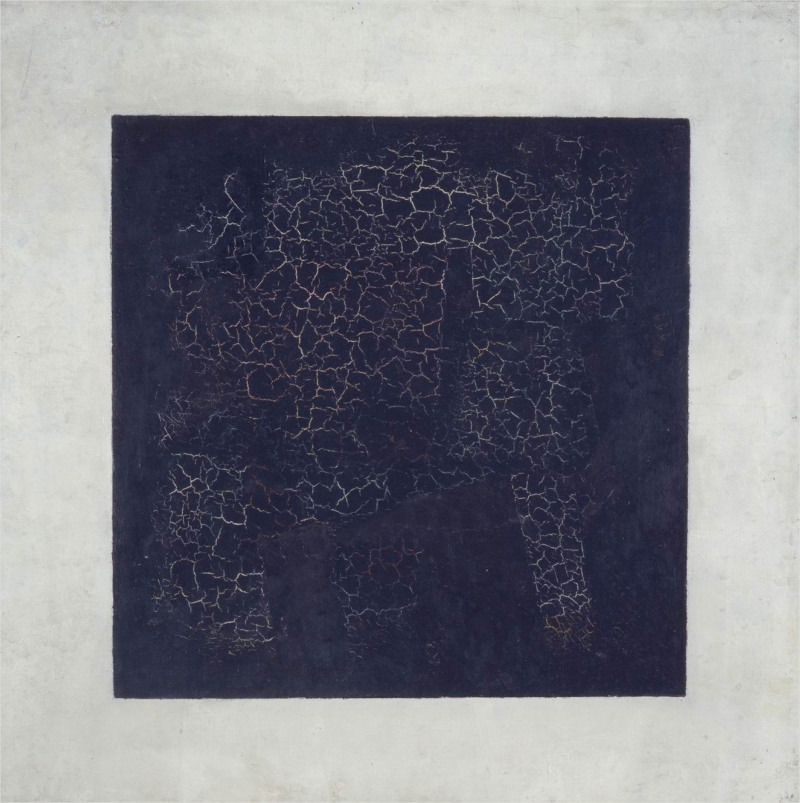 Black Square Abstract Painting by Kazimir Malevich
Black Square Abstract Painting by Kazimir Malevich
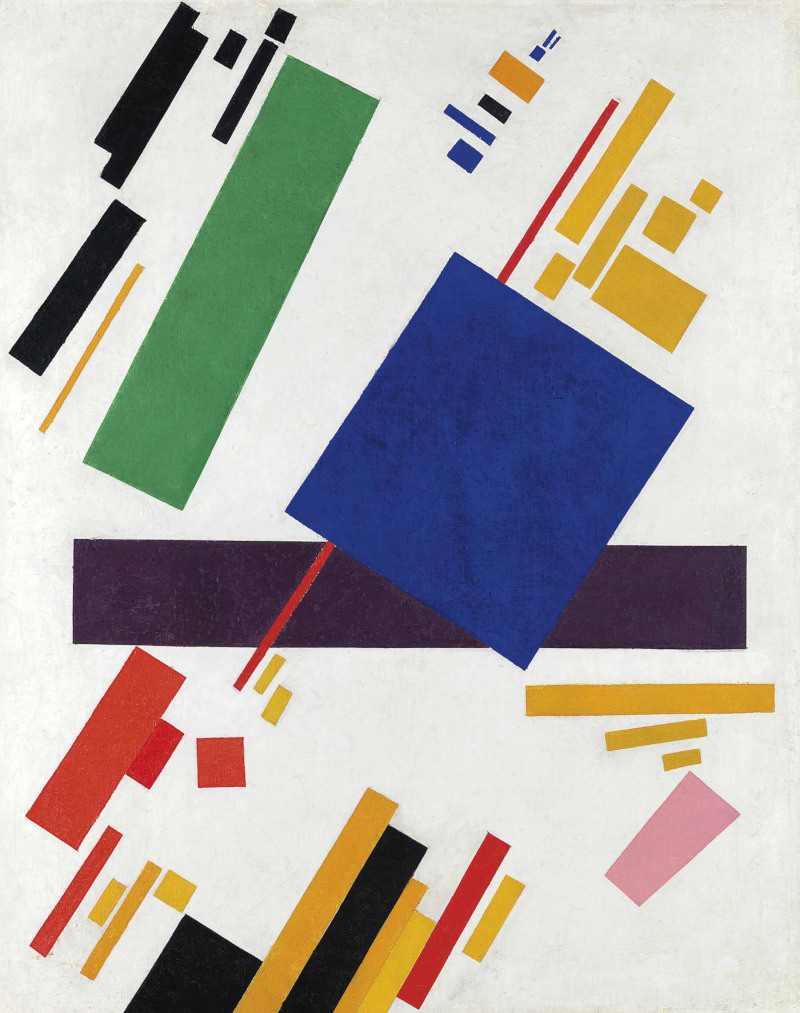 Suprematism Abstractionism Artwork
Suprematism Abstractionism Artwork
Joan Miró
Joan Miro was a famous Spanish painter who created abstract iconography which he was able to spread across multiple disciplines, including drawing, painting and sculpture. These includes lines, arrows, and also elements inspired by constellations. All would be delivered in a flat, two dimensional world which resembled a sky at night. Other items such as parts of the body and plants would be re-purposed in abstract forms, often floating in the wildnerness on their own, touching on an influence of Surrealism.
Miro was then able to take some of these items, along with his bright palette, and apply them to large, outdoors installation sculptures, many of which remain in place today. Miro remains one of the most famous abstract artists to have come from Spain, with this nation being particularly influential in Surrealism and Cubism, as well as modern art more generally. Many of them would also produce decorative ceramics, drawing together traditional and modern art styles.
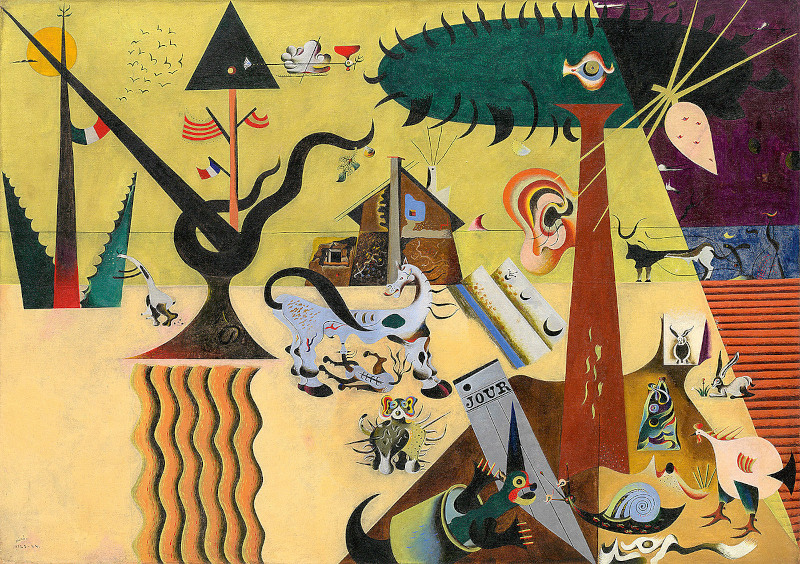 The Tilled Field Abstract Painting by Joan Miro
The Tilled Field Abstract Painting by Joan Miro
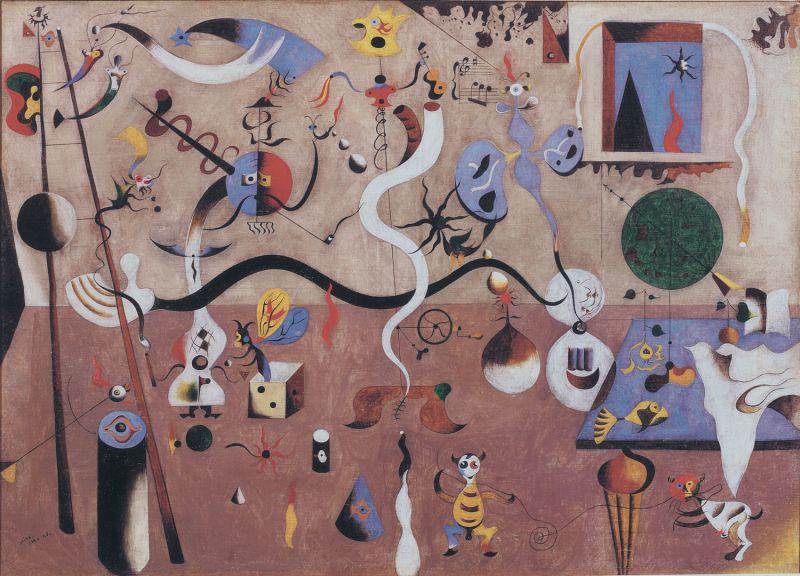 Harlequins Carnival by Joan Miro
Harlequins Carnival by Joan Miro
Paul Klee
Paul Klee's classic artwork, Castle and Sun, is shown below and perfectly captures the balance between Abstractionism and reality. There we find a bright and almost child-like interpretation of a cityscape, with buildings reduced to a series of squares and triangles, with a circle representing a falling sunset. Senecio, by contrast, provides an abstract portrait, which may remind some of non-western art, such as from various African cultures.
Klee himself worked in a variety of styles across his highly prolific career, all of which were modern. He also experimented with watercolors as well as oils, and was also a talented draughtsman. His colors were carefully considered, with Klee becoming a color theorist who published his thoughts on the use of color within art, and how color could be used for different purposes, when combined in different ways.
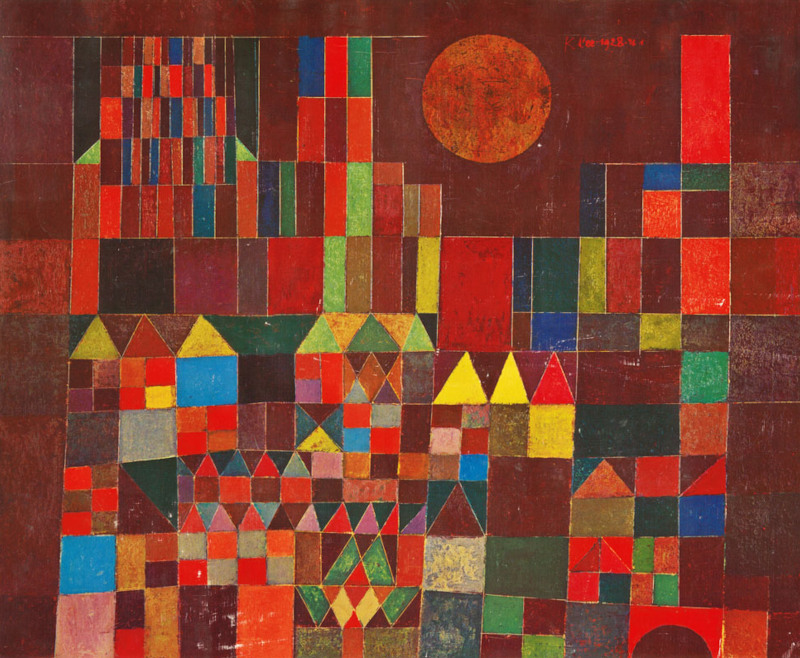 Castle and Sun by Paul Klee, Abstract Cityscape Painting
Castle and Sun by Paul Klee, Abstract Cityscape Painting
.jpg) Senecio by Paul Klee (Famous Abstract Art Painting)
Senecio by Paul Klee (Famous Abstract Art Painting)
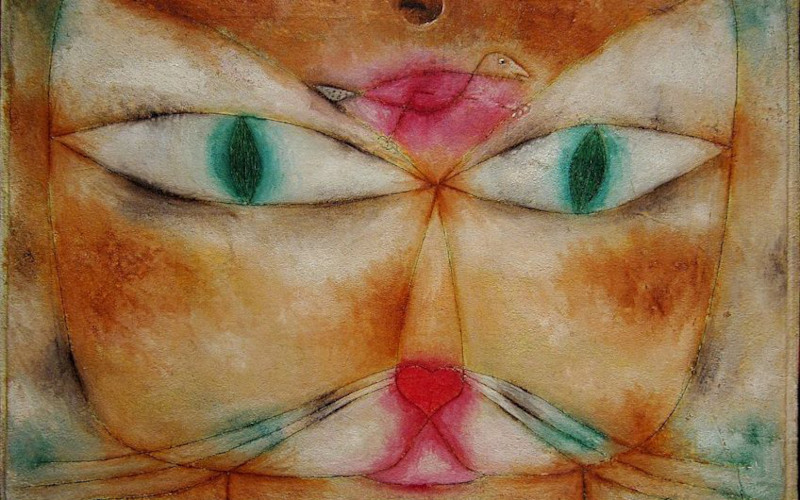 Cat and Bird, Famous Abstract Expressionist Artist, Paul Klee
Cat and Bird, Famous Abstract Expressionist Artist, Paul Klee
Georgia O'Keeffe
Georgia O'Keeffe is most famous for flower paintings in which the composition would be zoomed into the centre of a plant, removing the context of the overall shape of the flower head. This produced bright, abstract shapes which perfectly suited the direction of American art at the time. The artist even started to grow her own flowers to use in her work, as well as collecting other items in her native US, such as animal bones. She was a Modernist, with abstract shapes and bright colors throughout.
O'Keeffe helped to establish American art as a leading influence on western art, as for centuries US-based artists had mainly been following in the footsteps of their European counterparts. Modern art would mark the rise of US art, and they would become masters of abstract art, with O'Keeffe appearing alongside the likes of Rothko and Pollock. Collectors soon took note, and valuations of their work shot up in the second half of the 20th century.
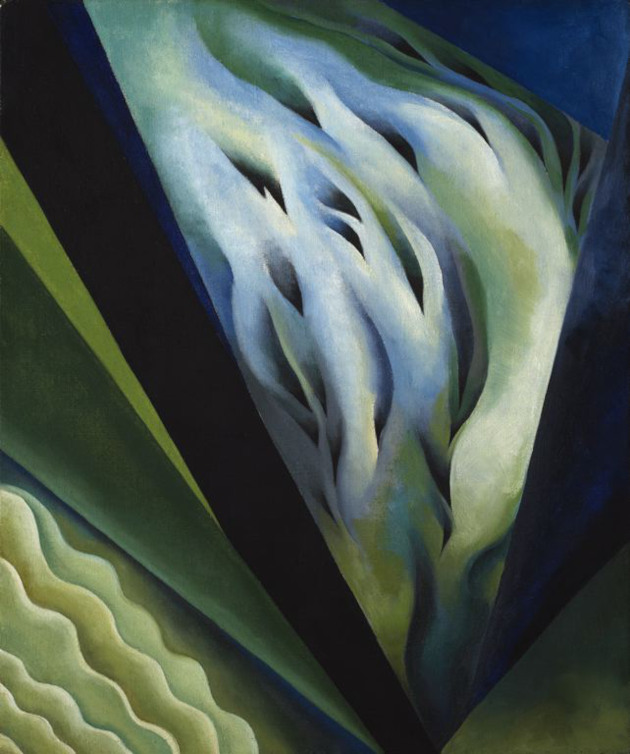 Blue and Green Music, American Modernism, Precisionism
Blue and Green Music, American Modernism, Precisionism
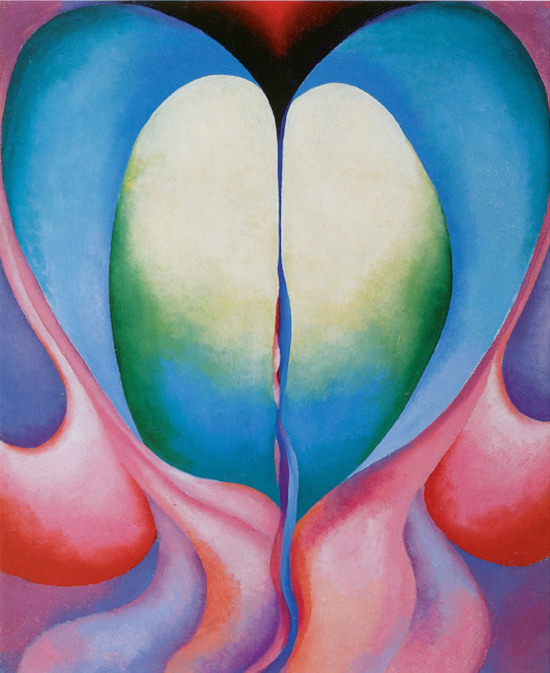 Series 1, Number 8 by Georgia O'Keeffe
Series 1, Number 8 by Georgia O'Keeffe
Pablo Picasso
Pablo Picasso worked in a modern fashion for much of his career, but it would be wrong to specifically label him as an abstract artist, as such. He certainly approached Abstract Expressionism in style at various points, but was someone who made use of elements of abstraction, rather than specialising in it. He worked with Cubism in the early 20th century, as well as Surrealism, but is better classified as a modern artist with a varied output. The influence of African art on his career lay behind his abstract figures, but he also worked more traditionally earlier on in his career.
Guernica, his most famous artwork, combined political activism and commentary with abstract forms, with twisted and contorted figures representing the brutality of war. This huge mural helps to represent a specfic period in Spanish history, but also to warn more generally about the hoors of war which are normally best avoided. Picasso's popular line drawings may also be considered abstract, because of how he reduced creatures down to just a single, carefully crafted stroke of the pencil.
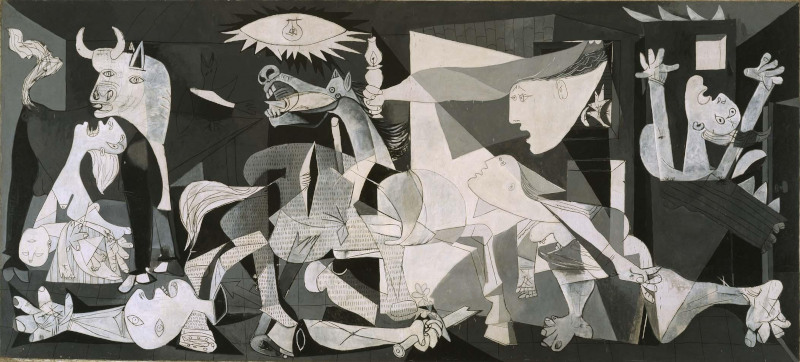 Guernica Abstract Art by Pablo Picasso
Guernica Abstract Art by Pablo Picasso
Ernst Ludwig Kirchner
Ernst Ludwig Kirchner made use of abstractionism within his Expressionist art, as shown in the painting below, titled Marzella. He would reduce city scenes and portrait figures to just a few, long brushstrokes, making color choices particularly important. German art enjoyed a number of impressive Expressionist painters in the early 20th century and they can be considered partially abstract in their manner.
Kirchner became one of the leading lights in German Expressionism and was able to produce impressive figurative work with rough and loose brushwork which in previous centuries who have been deemed unfinished, just as the French Impressionists would experience. The path of abstractionism was a slow evolution, and so it is worth including Expressionists such as this in order to see the various stages of the evolution, and to understand the important of German artists in this change.
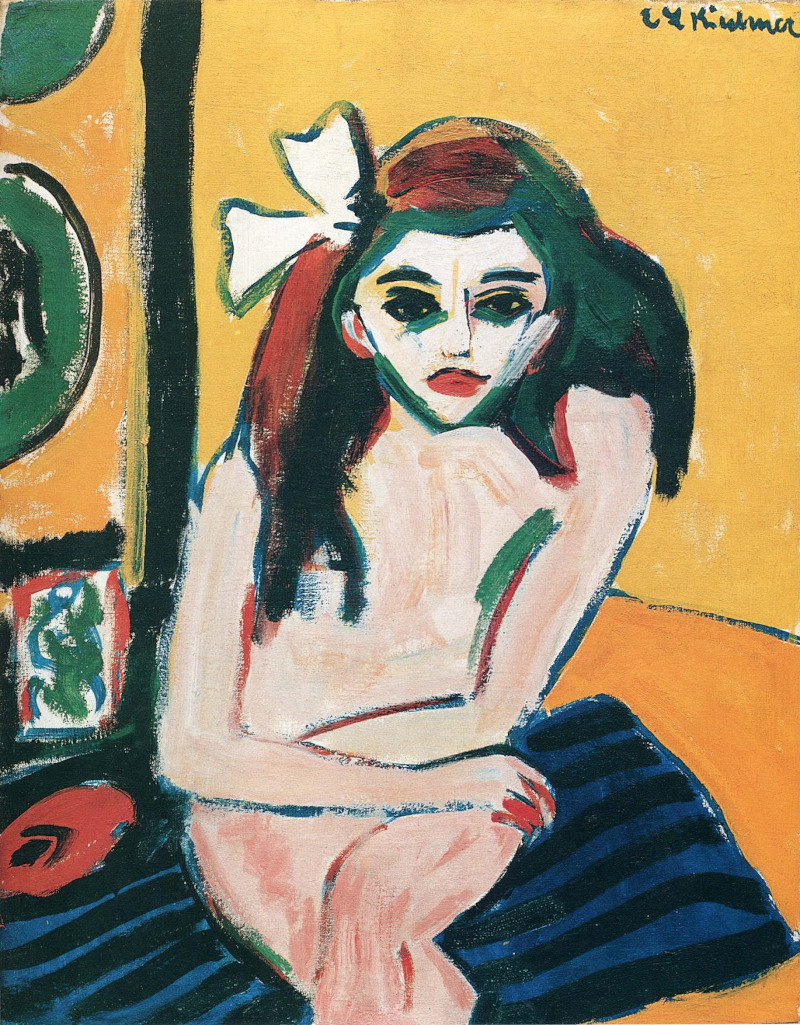 Marzella Abstract Portrait by Ernst Ludwig Kirchner
Marzella Abstract Portrait by Ernst Ludwig Kirchner
Joan Mitchell
Joan Mitchell was a famous female Abstract Expressionist from the US who passed away as recently as the 1990s. She worked in an expressive manner, with gestured brushwork which reached a high level of abstraction. Her brisk, long brushstrokes would excite those knowledgeable on modern art, but those relatively unfamiliar might struggle to understand the purpose and meaning of her work 0 this was a constant issue within late 20th century art, and has continued into the 21st century.
Mitchell worked in a variety of mediums, including painting, printmaking and pastels and her work was memorable for often leaving elements of the original canvas or paper still visible. She became part of the New York School, which was highly significant within the history of American art and helped the country to lead Europeans for the first time. This advantage remains in place today, with New York continuing to be the centre of modern art.
Helen Frankenthaler
Helen Frankenthaler was another notable female artist connected to the Abstract Expressionist. The New York native became part of the Color Field movement, and she has also sometimes been labelled as part of the lyrical abstraction style. Some of her work in the 1950s reminds us of the early work of Rothko, with expressive blocks of color resembling reality, but in an imaginative, abstract way. Later on both would become more abstract, with Rothko's later work becoming his best known output.
Willem de Kooning
Willem de Kooning was a much loved abstract painter from the Netherlands who later relocated to the US. He produced some memorable abstract portraits, where nightmarish figures could be distinguished from brisk, expressive brushstrokes. His approach is also sometimes known as Action Painting, where aggressive touches of paint connect with the emotions of the artist as they work quickly, and deliver images directly from the depths of their mind and soul.
Franz Kline
Franz Kline was an American Action painter who settled in New York city during a key moment in the rise of American art. His work was abstract, often relying on simple arrangements of lines, with a greater meaning lying behind his work. Kline remains regarded as one of the leading members of the New York era, and continues to be celebrated today, despite passing away at a relatively young age. He was also well known to a number of other related artists from that period, and participated within the wider art community.
Josef Albers
Josef Albers was a master of Geometric Abstraction and also formulated theories around the use of color within art, just as earlier abstract artists like Kandinsky and Klee had done. This German artist also impressed in other mediums, including stained glass windows and was not initially a modern artist. Geometric Abstractionism grew in popularity over time and is regarded as an important sub-movement of the overall modern art scene.
Cy Twombly
Cy Twombly was an important American painter who inspired the likes of Jean-Michel Basquiat. He was to become a global star, exhibiting regularly in both the US as well as a number of European countries such as France, Italy and the UK. He worked in a truly abstract manner, when few could identify any connection to items from reality, and this brought him in for criticism initially, before later the quality of his work was better understood.
Howard Hodgkin
Howard Hodgkin was a British painter who worked in an abstract manner, with expressive, thick brushstrokes. He achieved success within the UK, even at a time when Abstract Expressionists were mainly working in New York, USA. He would later achieve the Turner Prize, a prestigious arts award, and he remains known as one of the leading British modern artists, only passing away relatively recently in London, 2017. Exhibitions of his work in the UK were common, marking the impact that he made across the country.
The Origins of Abstract Art and Abstractionism in Art
There were a number of different factors which led towards the rise of Abstractionsism in art during the early to mid 20th century. Photography was a discipline growing in interest at this time, and this brought about new ways of thinking in art, such as composition, angles, lighting and more. Additionally, the great masters of the Impressionist era would also bring about changes to the direction of European art which would later evolve into abstraction.
Following some of these developments, there would then be a number of small groups which emerged in the early 20th century which eventually would lead to a collective known as abstract art, or at least provide a precursor to it. This included neoplasticism which specifically and openly desired a movement towards abstraction, as well as the Russian Suprematism movement and the Bauhaus movement in Germany. All included theory behind their work, and it was clear that there was much thought behind abstract art, rather than merely providing a simple aesthetic display.
Predecessors and Influences: Abstract Elements in Traditional Art
Elements of abstract art appeared in many non-European cultures, a long time before westerners would start to use these ideas. Famously, African art provided abstracted figures in this paintings and sculptures, some of which would inspire the likes of Picasso, including in his approach to Cubism. Typically, African artists would reduce a human form to a small series of details, perhaps even elongating limbs in a manner later found in the Mannerists of the 16th century.
Besides African art, other examples of abstraction could also be found in Islamic art and architecture, partly due to their impressive understanding of geometry, but also in their use of calligraphy and other techniques which pushed them away from a desire to only depict items in an entirely realistic manner. The spread of cultures leading up to the 20th century is likely to have allowed some of these artistic ideas to spread across the globe, just as we see today through technology, which has facilitated a much faster spread of influences.
The Birth of Abstraction: The Early Pioneers
Most of the early pioneers of abstact art would evolve into the style over time, having initially worked in other ways earlier in their careers. One can even see a visual guide to these changes over time, with Piet Mondrian being a great example of that. He initially started to produce expressive tree paintings before becoming more and more abstract over time, building an audience as he went. Eventually, his scenes were reduced down to simple lines and colors, and by now his path to abstraction was complete.
A further example can be seen in the work of Kandinsky, who switched from an expressive manner, with the likes of The Blue Rider, before reaching a point where his paintings were complex series of lines and shapes. By then, color was his main concern, and he invested his time into producing color theories that others could learn from. There were also others such as Picasso who are not classed as abstract artists, but who started to use abstract forms in their work at around the same time, which encouraged others to work in a similar manner themselves.
Wassily Kandinsky and the Path to Pure Abstraction
Many consider Kandinsky was one of the pioneers of abstract art, though his obsession with color has a connection to his early use of Fauvist and Impressionist styles. Kandinsky eventually began to realise how color could be used in place of realistic form to represent something within art, and slowly he would start to move away from traditional methods. The artist would also begin to see how spiritual matters could be covered in art, but traditional styles would then suit it.
The artist would then embark on a journey which initially involved recognisable elements within an expressive format, before items became more and more abstract and disconnected from reality, before eventually his images were completely devoid of any connection to reality, other than in perhaps the mind of the artist himself - he had now reached the end point on a journey to full abstraction and his success would allow others to follow. They would not have to evolve in this manner, but could jump straight to the final stages.
Piet Mondrian and Neoplasticism (De Stijl): The Pursuit of Universal Harmony
Piet Mondrian desired a clear balance between elements in his painting and found the best way to achieve this was to reduce elements down to simple abstract shapes. His Neoplasticism (De Stijl) paintings tended to go with vertical and horizontal lines only, with diagonal lines being closer to nature, and a less harmonious display. Over time, Mondrian would create rectangular areas where his lines intersected, and these regions would be filled with flat, primary colors.
There would be many different approaches to abstraction, but Mondrian's was all about creating grid-like structures where balance was achieved through the use of lines and color. He loved nature, but depicted it earlier in his career when working in an expressive manner, before later showing influences of Cubism and then into other modern art forms.
Kazimir Malevich and Suprematism: Beyond the Object
There was a number of Russian avant-garde artists who inspired Malevich to come up with some forward thinking ideas within his own oeuvre. The artist desired a return to the zero degree of art, and immediately achieved it with classic works such as Black Square. He would continue in this format with different shapes and even one iteration which used white on white, with just a slight variation in tone.
Suprematism brought about more complex arrangements, but still were highly abstract. Rectangles and lines would vary in solid color, and it was clear by this point that Russian artist could help influence the direction of European art, even though they faced barriers within their own country. Many would relocate to central Europe or at least exhibit there regularly as they received a more welcoming reception in nations such as Germany.
Jackson Pollock and Action Painting: Capturing the Unconscious
Jackson Pollock's techniques were highly unusual and later became known as Action Painting. He would place large canvases and other materials across the floor before squirting and throwing paint on top in a seemingly random manner. He actually put much thought into things, including in color and also the way in which he applied the paint. The result of this process was original art every time that could never be replicated. Over time his contemporary style brought attention and backing, and Pollock remains one of the most famous abstract artists of all time.
Constructivism: Art as a Social and Political Force
Constructivism was formed by a number of Russian artists including Vladimir Tatlin, Alexander Rodchenko, and El Lissitzky. They saw existing art traditions as a luxury of the rich, and wanted to take things in a new direction that would allow other sections of society to get involved. They relied on geometric shapes for much of their work and also made use of all manner of materials including metal, glass, and plastics. Mixed media would later become a common feature within modern art but its inclusion at the time of Constructivism was ground-breaking.
Vladimir Tatlin and these related artists helped to bring art in everyday life, bringing functionality into elements of design. The movement was brought to an end by political issues in their native Russia, with Avant-Garde art quickly becoming seen as a challenge to authority, and something that needed to be stopped and discouraged. This situation continued later for the German Expressionists, and eventually a number of European painters who relocate to the US, which eventually became the global center of modern art.
Abstraction in Latin America: A Unique Perspective
European art influenced Latin Americans across the 20th century and eventually this would lead to a number of Latin American abstract artists appearing for the first time. They would take elements from Europe, but also implement a number of aspects unique to their own cultures, which included symbolism, religion, color and fashion. Artists such as Tomás Maldonado, Gyula Kosice, and Rhod Rothfuss were some of the bigger names to appear and there was also a number of muralists who experimented with abstraction, such as Diego Rivera, David Alfaro Siqueiros, and José Clemente Orozco.
Lygia Clark, Hélio Oiticica, and Lygia Pape within Brazil were connected to installation art and became known as the Concrete Art movement, which was a highly modern art style which combined many elements, including European abstract art. It must be remembered that originally, Europeans were inspired by ideas from abroad, and so this cycle would just continue again and again, speeding up after the rise of technology in the second half of the century.
African American Artists and Abstract Expressionism
In an interesting development, considering its origins, many African American artists would become involved with abstract art across the 20th century. It was useful for political messaging which was common in much of their work. Abstract art was originally inspired, in part, by African art, and so this evolution seemed entirely organic. It is highly unfortunate that many suffered in the art world, just as they did elsewhere in society but over time more and more African American artists have been given more opportunity to display their talents, with likely further improvements on the way in the future.
Norman Lewis, Alma Thomas, Ed Clark, Bob Thompson, and Jack Whitten are some of the great names to research on this topic, and it would be wrong to categorise them too restrictively, when they obviously each held many unique strengths which together helped to build momentum for African American artists in the US. Jean Michel-Basquiat became perhaps the most famous of all, and his legacy is huge, becoming a much loved figure with younger generations in particular.
Women Artists and Abstract Art: Challenging the Male Dominance
There was a large number of female painters to appear in the Impressionist era, and from that momvement, so other women would start to appear in the other styles that followed. In terms of abstract art, we remember the likes of Lee Krasner, Joan Mitchell, and Helen Frankenthaler, who were all Abstract Expressionists. Aside from that there were many other famous female painters spread across a number of other offshoots of abstract art. Georgia O'Keeffe brought attention to the beauty of flowers and animal bones, in new Modernist forms.
Hilma af Klint was also a key contributor in the use of geometry and simple shapes within art, though her impact has not been truly understood until relatively recently. Agnes Martin, Bridget Riley, Carmen Herrera are some of the new breed of women who continue to influence the direction of modern art. Curators have been more willing, even proactive, in displaying more of their work over the last two decades, which may encourage more women to become involved in the industry over the next few generations.
Digital Abstract Art: Technology as a New Medium
Advances in technology have brought new opportunities to artists. Firstly, those from outside the main art centers can now bring exposure to their work, by sharing paintings and drawings on social media or via email. Artists can even work collaboratively whilst being located in different places, taking on existing work as and when they like. Tablets and sometimes mobile phones can be used to draw various creations, with editing options enabling artists to correct work easily. Exhibitions of work completed using these tools are now fairly common, and support for these tools is growing.
The newest development has been with AI art, which potentially will enable non-artists to create original work themselves, using just a few prompts. This may lead to some issues regarding integrity and quality, but there could also be many benefits to this, as well as increasing productivity for those working in the commercial site of art, such as professional illustrators. It is important that AI is used as a tool, rather than as a replacement for creativity and technical knowledge, otherwise the respect afforded artists may be lost.
Everyday photography has been a respected art discipline for many years, but also counts as an art form reliant on technology. The inclusion of cameras in phones has enabled anyone to take photographs when on the move, though quality naturally varies. For many photography can be an entrance into the art world, and overall its benefits out weight its negatives.
The Future of Abstract Art: Trends and Innovations
The future of abstract art looks exciting, with many potential innovations waiting to appear. Despite abstract art first emerging in the early 20th century, it remains strong today, albeit under different guises. Technology is likely to impact all forms of art, and that will play a role in the next methods in which abstract art appears, as well as modern art more generally. Globally, there should be a wider spread of artists and potentially many more cultures will become involved in abstraction, as the use of the internet increases connectivity across the world.



